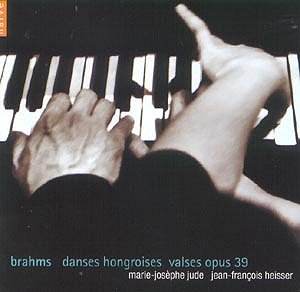 Johannes BRAHMS: Violin Concerto in D Major, Op. 77
Johannes BRAHMS: Violin Concerto in D Major, Op. 77
Vasco Barbosa, violin
E.N.R Symphony Orchestra
Fritz Rieger, conductor
Recorded live, Cinema Tivoli, Lisbon, 20 November 1965
Label: STRAUSS SP4351
Duration: 37:36
In this live 1965 recording of Brahms’ Violin Concerto, Portuguese violinist Vasco Barbosa engages with a cornerstone of the Romantic repertoire, revealing both the strengths and vulnerabilities inherent in live performance. Barbosa, the son of a distinguished musician, has cultivated a career that not only underscores his prowess as a soloist but also reflects a profound commitment to contemporary Portuguese composers. This concert, conducted by the lesser-known Fritz Rieger, offers a rich tapestry of interpretations, albeit not without its challenges.
From the outset, the performance’s recording quality presents a notable issue. The acoustic environment of Cinema Tivoli, while historically significant as a venue, yields a somewhat distant and occasionally desiccated sound, which may detract from the orchestra’s overall impact. The first violins, in particular, seem strained during the tuttis of the first movement, suggesting a lack of full ensemble cohesion that can occur in live settings. The recording, while capturing the immediacy of the performance, struggles to deliver the depth and warmth typically associated with Brahmsian orchestration.
Barbosa’s interpretation of the concerto itself is characterized by a compelling interplay with the orchestral fabric. His tone, at times obscured by reverberation, shines through with an engaging vigor. The way he digs into the string during the first movement—particularly at the climactic moments—is both exciting and evocative. However, it is clear that the live setting introduces certain executive casualties: bowing slips and rhythmic instabilities surface as inevitable byproducts of performance immediacy. The vibrato employed by Barbosa, while fast and expressive, occasionally risks losing the lyrical line that Brahms demands.
A significant aspect of Barbosa’s interpretation lies in his phrasing, which, particularly in the second and third movements, veers towards an overly metrical approach. This rigidity can strip the music of its inherent lyricism and flexibility, elements that are vital when navigating Brahms’ intricate melodic lines. Comparatively, other interpretations—such as those by Itzhak Perlman or Anne-Sophie Mutter—often exhibit a more nuanced elasticity, allowing for a more organic unfolding of Brahms’ thematic material. These interpretations serve as benchmarks for flexibility and expressiveness, highlighting the importance of maintaining a fluid musical dialogue.
Rieger’s conducting, while solid, does not provide the kind of interpretative depth that one might expect from a more seasoned figure in Austro-German repertoire. His direction, competent but somewhat unadventurous, fails to elevate the orchestral accompaniment to match Barbosa’s more passionate moments. The resulting orchestral texture, while supportive, lacks the vibrancy that can elevate a performance of this magnitude.
Historically, this recording occupies an interesting space within the discography of Brahms’ Violin Concerto. It reflects a time when live performances were often seen as ephemeral experiences, captured in a way that may not have fully represented a musician’s capabilities. As such, while this recording may not stand as a first-choice recommendation for a newcomer to the concerto—due in part to its technical shortcomings—it serves as a valuable document of Barbosa’s artistry and his contributions to both the classical canon and the promotion of Portuguese music.
In summation, Vasco Barbosa’s performance of Brahms’ Violin Concerto is a compelling, if imperfect, encounter with a monumental work. For admirers of Barbosa, this recording is a commendable souvenir of his artistry, encapsulating both the spirit of live performance and the challenges that accompany it. The historical context and the interpretative choices made here contribute to a broader understanding of Brahms’ enduring legacy, even as the recording itself may elicit mixed responses. Ultimately, this performance invites reflection on both the joys and the limitations of live classical music.



